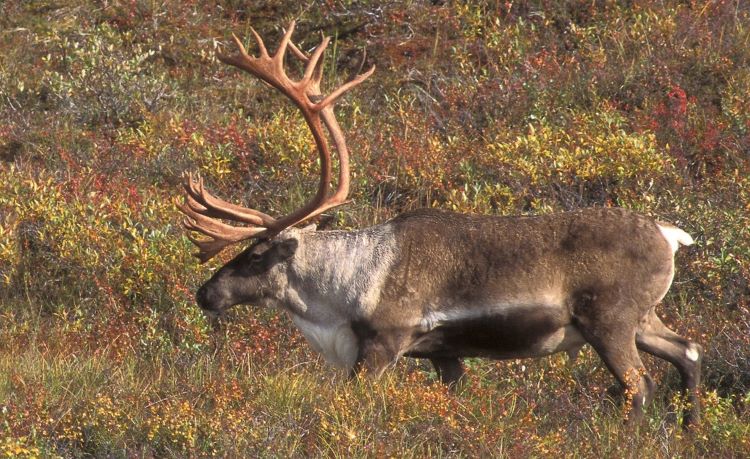Alberta’s government has a long-term recovery plan in place to help stabilize and recover caribou populations. However, caribou require specific habitats and there are more than 200,000 kilometres of legacy seismic lines needing restoration in caribou ranges. This is also complex, specialized work and local expertise is often required.
To help, Alberta’s government is investing $1.25 million into working with Fort McKay First Nation and the Athabasca Landing Métis Community Association to replant trees and restore critical caribou habitats in Northern Alberta. This will help ensure caribou populations can continue to grow while incorporating more Indigenous values and perspectives into Alberta’s caribou approach.

A caribou walking in its natural habitat in Northern Alberta (Credit: Government of Alberta)
“By restoring caribou habitat, we are setting caribou populations up for recovery. This work takes time, but through replanting and reforesting habitats we are supporting caribou populations and creating job opportunities for Albertans, all while also supporting traditional Indigenous land-uses.”
Fort McKay First Nation has received a $1-million grant to reforest legacy seismic lines and restore caribou habitats. Maintaining landscape intactness is a government commitment under the Moose Lake Access Management Plan.
The First Nation will develop a treatment plan and conduct restoration work that supports traditional use and improves caribou habitat recovery in parts of the Moose Lake planning area that overlap with the Red Earth caribou range in northeast Alberta. The treatment plan will assess areas in need of restoration and prioritize them based on biophysics and priorities of the First Nation. Restoration work will include preparing areas for tree planting, planting the trees and managing access to improve chances of long-term restoration success.
The Athabasca Landing Métis Community Association has also received a $250,000 grant over two years to conduct habitat restoration to support the Wandering caribou herd. With this grant, the group will expand their knowledge in all aspects of restoration, including planning, treatment delivery and monitoring in the Wandering River sub-region. This will help build their capacity to undertake and lead more caribou habitat restoration work in the years ahead.
“Athabasca Landing Métis Community Association is thrilled to be part of the Wandering River Pilot Seismic Line Restoration Project to improve environmental sustainability practices within our traditional territory. This opportunity will create employment for our members, develop skills and acquire organizational capacity for ongoing participation in the Caribou Habitat Recovery Program.”
Quick facts
- Alberta’s woodland caribou population is listed as a threatened species.
- Budget 2024 allocated $38.1 million for caribou recovery planning and actions in 2024-25, including:
- $24.5 million in caribou habitat and recovery funding outlined in agreements with the federal government.
- $13.6 million in provincially funded caribou recovery activities.
- More information on other caribou funded activities will be shared later this year.
- In total, $8.5 million has been earmarked for caribou habitat restoration in the Moose Lake area.
- More than $70 million has been invested into replanting and restoring caribou habitat through the Caribou Habitat Restoration Program.
- More than 1,000 kilometres of abandoned seismic lines have been replanted and restored in caribou ranges as of 2022, with the province aiming to have more than 2,500 kilometres restored by 2026-27.